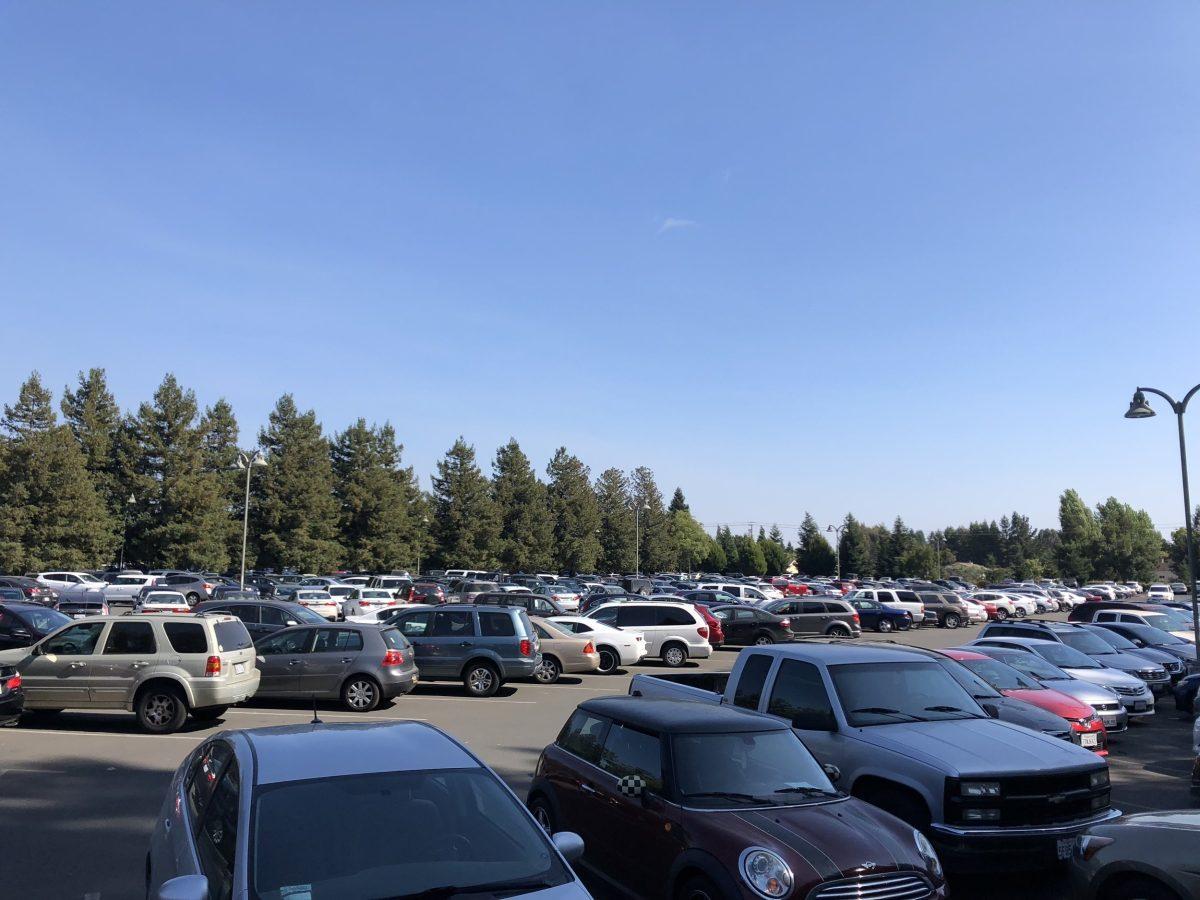Sonoma State’s administration has raised the general and motorcycle parking rates for Fall and Spring 2018 semesters in efforts to improve the quality of the parking lots and roadways throughout campus.
The university has developed a five-year plan, projected to cost around $2.8 million. The university explained in an email sent on July 31, that the parking is “a self-support program, which means that we cannot use general fund or tuition revenue to fund parking construction, operations or maintenance. Your purchase of a semester or daily permit enables the University to build and maintain the lots and roadways and to purchase supplies and equipment necessary to operate the program.”
The previous cost of a general parking pass was previously $94, and has been raised to $104. Megan Varnadore, the Parking Operations Manager of Transportation and Parking Services at Sonoma State said, “This is the first time we have raised parking permit rates in 15 years. They were last raised when lots L, M, N and O, located by the Green Music Center, were built.”
Varnadore also explained how the Transportation and Parking Services came up with the increased price tag. “We looked at total costs of maintenance and repairs on parking lots, roads and update lighting as new technology becomes available over the next 10 years as well as taking in the average parking permit cost for all Cal State Universities.” When asked why reserved parking wasn’t raised,
Varnadore said, “We have sold out of reserved permits the last couple semesters and with the limited inventory of reserved parking we did not feel that increasing the rate would have a substantial impact on revenue.” Reserved parking permits currently cost $260.
Part of this five year plan is already underway. Lot E, a general parking lot near Person Theatre and Ives Hall, had been under construction during the summer and opened for student and faculty use when classes started on August 20. The lot now has a repaved roadway, better defined parking spaces and updated lighting structures.
The email from the university said that the money will “meet the short term and long term needs of the campus and, at the same time, will help build parking reserves to enable the campus to increase parking capacity without further drastic fee increases.”
Students have been hesitant about where exactly the money is going. Cassy Mackinen, a fourth-year student who has been purchasing general passes for the past three years, is weary of the change. “It feels unfair paying more money for something I’m not even going to be able to enjoy,” Mackinen said. “Sure, Lot E looks a lot nicer, but they didn’t even make more parking spaces. I still struggle to find parking every morning. I think the students would really appreciate the money to go towards more spaces, not just the quality of the lots.”
Varnadore addressed the issue of making more lots and parking spaces. “The increased revenue allows for much needed deferred maintenance and repair of parking facilities that was not possible at current revenue levels as well as new lighting, pedestrian flashing lights and repaired roadways. Anticipating the expansion of student enrollment over time, new parking lots will need to be built and Parking would like to have a healthy reserve for when that time comes,” she said.



































